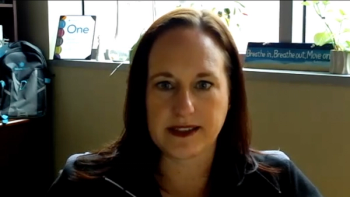
- ONCOLOGY Vol 15 No 2
- Volume 15
- Issue 2
Medicare Bill Expands Cancer Screening
The Medicare bill that Congress passed in December 2000 (H.R. 5661) didn’t help oncologists or any other medical specialty in terms of increasing payment in such pressing areas as chemotherapy administration. Instead, the bill gave big bucks
The Medicare bill that Congress passed inDecember 2000 (H.R. 5661) didn’t help oncologists or any other medicalspecialty in terms of increasing payment in such pressing areas as chemotherapyadministration. Instead, the bill gave big bucks to hospitals, HMOs, and nursinghomes, whose administrators have been complaining about the 1997 Balanced BudgetAct, which made major Medicare program changes and which put them all in direfinancial straits. However, H.R. 5661 did contain two separate cancer provisionsthat will be welcomed by oncologists. First, the bill expanded Medicare cancerscreening benefits for pap smears, colonoscopy, and mammography. For the firsttime, women under age 40 but over age 35 can receive one screening mammogramduring a 5-year period. These women, of course, must be Medicare recipients (ie,disabled).
Pam Dougherty, manager of federal government relations for theAmerican Cancer Society, says her group pressed Congress to expand thecolonoscopy benefit. Currently, Medicare recipients can receive a sigmoidcolonoscopy every 2 yearsbut only if they are at high risk for colorectalcancer. The new bill allows average-risk individuals to receive a sigmoidcolonoscopy once every 10 years. "That is a huge victory," exclaimsDougherty. The Medicare colorectal screening benefit also allows a fecal occultblood test every year, plus a flexible sigmoidoscopy every 4 years foraverage-risk individuals.
Besides the bill’s expansions in cancer screening, H.R. 5661also instructs Tommy Thompson, who is nominated to be secretary of theDepartment of Health and Human Services (HHS), to develop nine pilot projectsaimed at reducing disparities in the early detection and treatment of canceramong minorities. Two projects will ensue for each of the following groups:American Indians and Eskimos, Asian Americans, Blacks, and Hispanics. The HHShas 1 year to determine the "best practices" for reducing thedisparities, with 1 additional year to designate the nine demonstrationprojects. The projects will also attempt to improve clinical outcomes, patientsatisfaction, and quality of life. If these pilots prove successful after 2years, they may be continued; and if this occurs, there is no doubt thatCongress will expand the program.
Articles in this issue
almost 25 years ago
Study Details Use of Amifostine in Radiation Settingalmost 25 years ago
Declines in Lung Cancer Rates-California, 1988-1997almost 25 years ago
Medicare Approves PET for Additional Cancersalmost 25 years ago
Study Contributes to Evolution of Sentinel Lymph Node Biopsy for MelanomaNewsletter
Stay up to date on recent advances in the multidisciplinary approach to cancer.
















































































